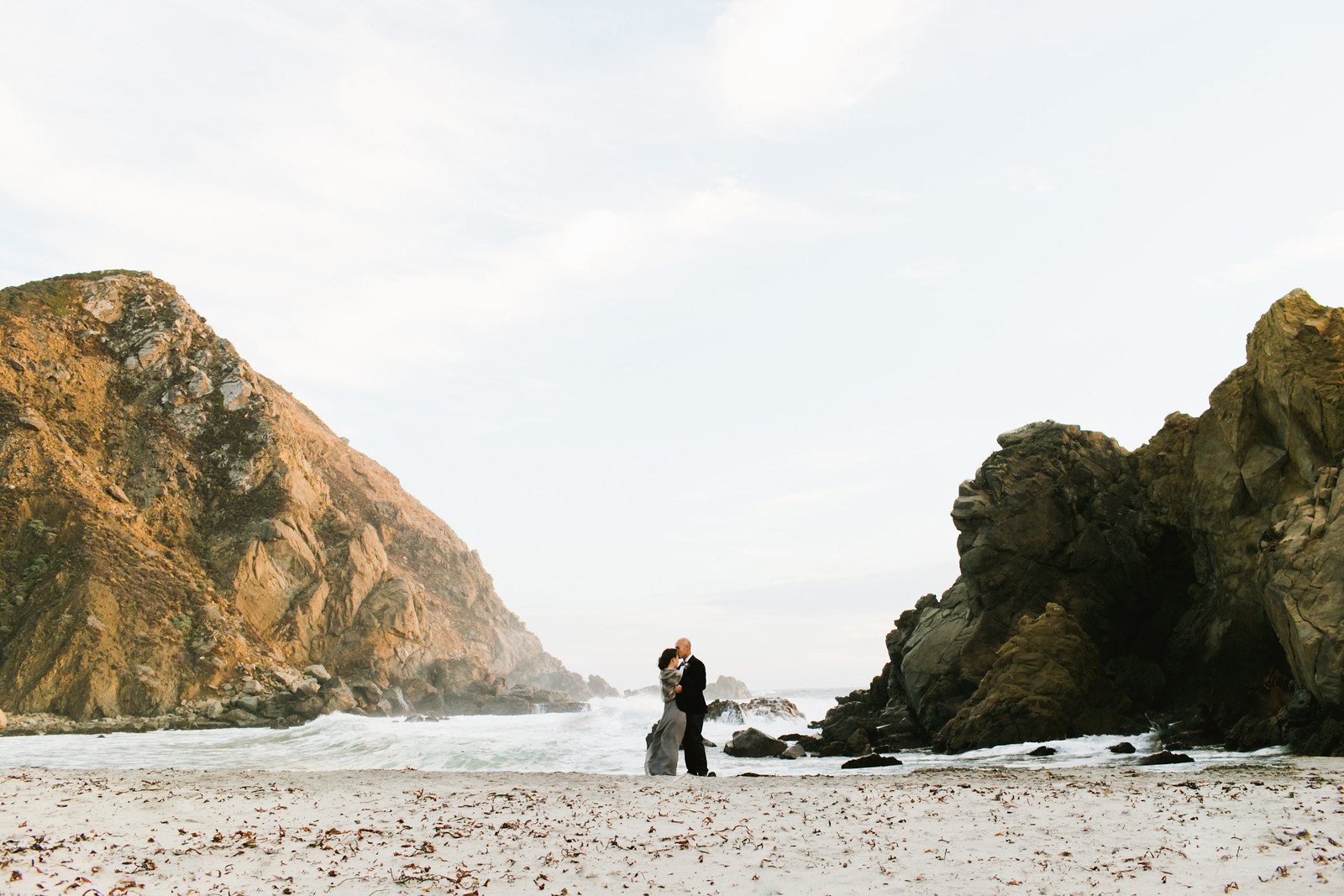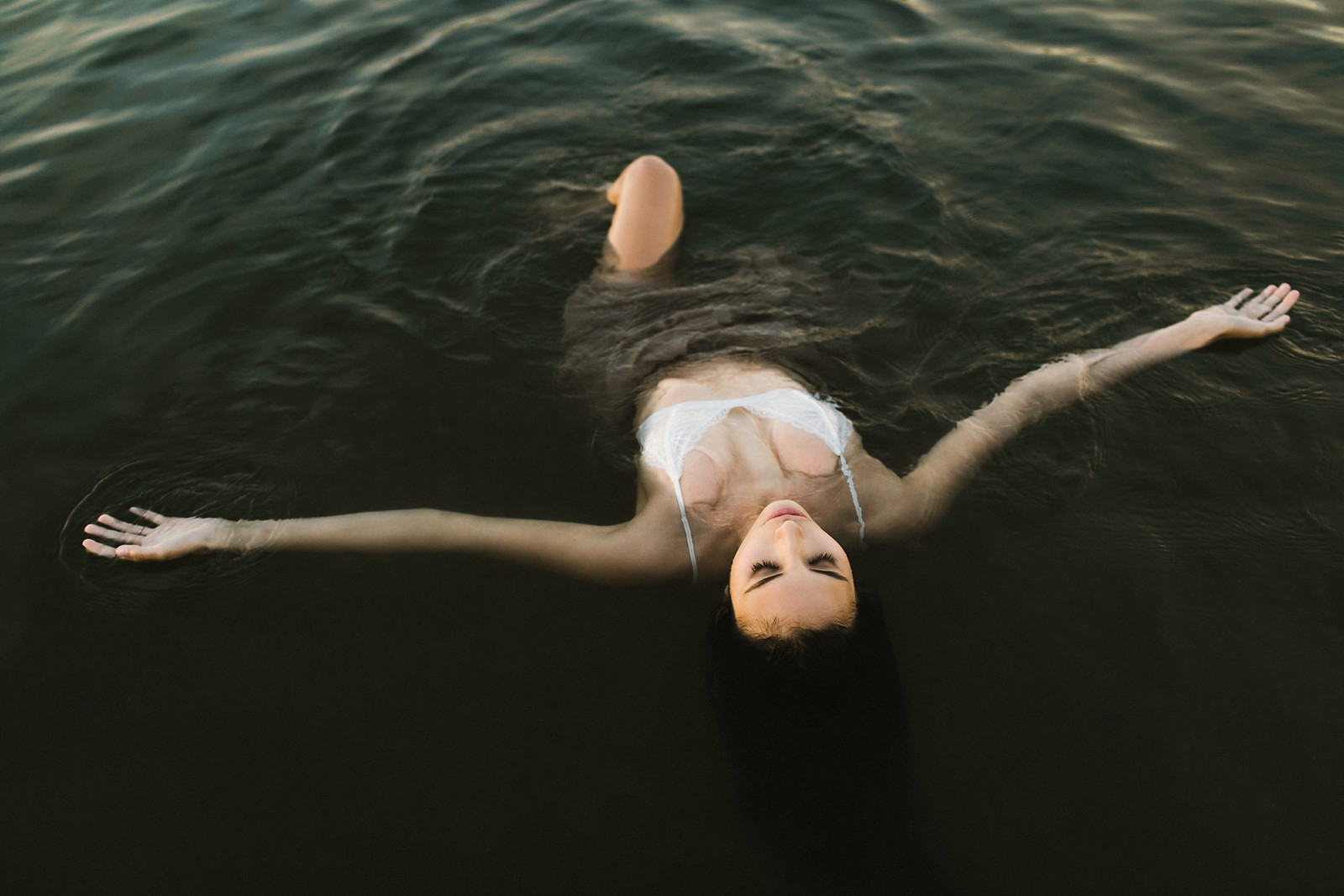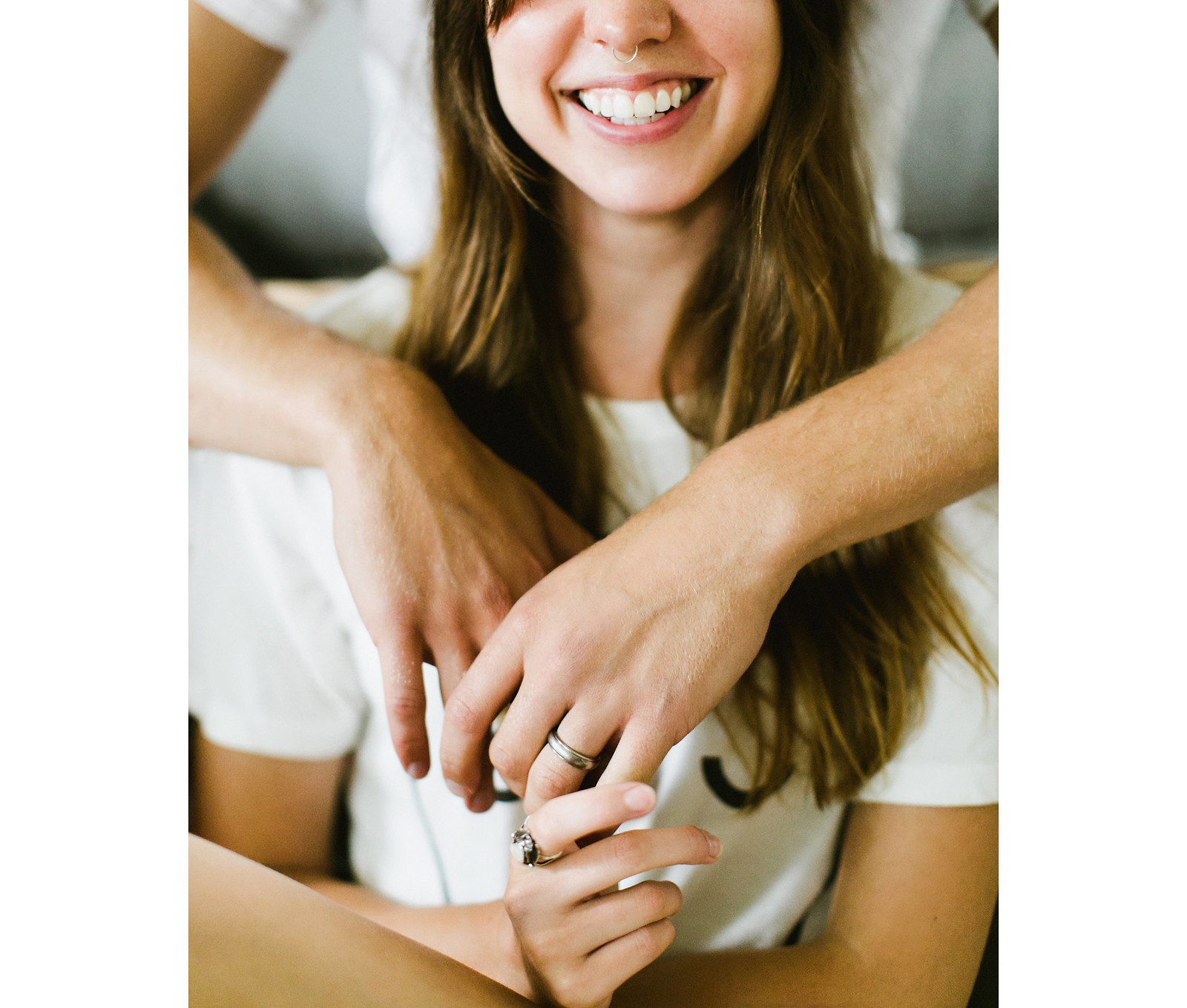COMPOSITION 101
I’d like to start this one off by saying that I’m 100% not the master of composition. In fact, I’m not even close. So if you’d like to learn composition from someone who’s not even close to mastering it, read on. This is the aspect of my work that I struggle with the most. I know the “rules” (and I’m a firm believer in breaking them with intention), but it’s never been second nature to me like lighting or posing has. That’s exactly why I’m writing this. I’m hoping that there’s someone out there who’s earlier along in their career and needs to read some of the composition basics so it becomes second nature before it’s too late. If that’s you (or you just need a refresher), enjoy!

SEPARATION
One of my favorite things in a killer portrait is a separation between the subject and the background that draws your eyes right where they should be. This might mean that the subject is bright and the background is dark (or vice versa), or that there’s a difference in contrast, color, focus, or anything else. Below is the simplest way I can think of to show how much of an impact a strong separation can have. The dot on the left is almost the same shade as the background so it gets lost in it while the dot on the right is much darker than the background, making it pop!

Below are a few images and captions as examples of how separation affects what your viewers eyes are drawn to and how much your subject pops!

CONTAX 645 + Portra 400
I chose this frame as an example because you can see how much of an impact that separation can have. Check out the difference in pop on the right and left sides of her face. In the right, her face is almost as bright as the background so it starts to blend in. On the left, her cheek is much darker than the background which defines that edge and helps it pop! BAM!

5D II + 35L
This is why paying attention to the wardrobe can be so important. If Ashley had been in a darker wardrobe, this shot wouldn’t have worked. She would have blended into the dark background and become hidden in the frame instead of popping out of it. This doesn’t mean that we always need to control what our clients wear, but we should be aware of what type of background to place them against depending on what they’re wearing!
NATURAL FRAMES
Wherever you are, natural frames abound. Think of these frames as composition tools that you can place your subject in to draw your viewers eye to them. Tree branches that line up just right, a window, a hole in a rock formation, doorways, etc. They’re everywhere and they’re perfect for creating a focal point in your image that your subject can rest in.

5D III + 35L
While I was scouting for this shoot, I saw a lovely little pocket in between two rock formations that I know would be a killer spot to place these two. When I’m using natural frames like this, I’m always careful not to place my subject too close to the edge of the natural frame. Leaving them a little bit of space keeps the frame feeling comfortable instead of tense and claustrophobic.

5D III + 35L
Framing is all placing your subject in the right spot in the background. If I shot the image above with them placed a little to the left or right, the framing here would be lost. They wouldn’t have fallen perfectly between the two rock formations that currently hold them comfortably in the image and the composition wouldn’t feel as powerful. By the way, this image (and the next few) are hover-overs. Woohoo!
CREATING FRAMES
In the last tip, I said “Wherever you are, natural frames abound.” Well, I lied. Sorry! Sometimes those natural frames aren’t quite as easy to find but don’t fret, humans come with built in framing devices! Posing isn’t just about flattering the body. Posing has a huge role in your composition and where your viewer looks, so use it to your advantage. Use your subjects arms and hands to create frames!

5D III + 35L
I got hooted at by some middle school girls while I was scouting for this shoot. As I continued walking by, pretending I didn’t hear them, those hoots were followed up by “no ass though.” Completely unrelated, but hey! Anecdotes! For something more related, use arms to create frames!

5D III + 35L
In this one I have a double whammy. If you hover, you’ll see how I used Meredith’s hands to frame her face and if analyze it a little more, you might notice one of my favorite wardrobe choices for composition. Wide brim hats! Taking a portrait of someone wearing a wide brim hat is almost cheating because it’s literally a built in framing device that draws the focus point right into the face by putting a huge circle around it.
LEADING LINES
If you only know one thing about composition, this is probably it. Leading lines act as arrows pointing your viewers directly into the focal point of your image and they’re freaking everywhere. Mountains, tree branches, stairwells, roads, etc. If you can find a prominent line, you have yourself a leading line. The more of these you can point towards your subject, the stronger that focal point will be.

5D III + 35L
Leading Lines 101
1. Find the prominent lines.
2. Point them at your subject.
3. Success!

5D III + 35L
I’m a huge fan of minimalism which leaves me with a lot of images like the one above. Just a subject, and nothing in the environment to use as a leading line or natural frame. Luckily, those built in framing devices that humans have (often referred to as limbs) can make for some killer leading lines too.
VARIETY IN A SET
Most of us aren’t fine artists that deliver one final image from a shoot. The majority of you all reading this are wedding photographers, portrait photographers, and others who deliver sets of image to their clients. I deliver roughly 20-40 images for couples/editorial shoots and about 400 images for weddings. That’s a lot of images to look through and the challenge we’re faced with is holding our viewers interest long enough to keep them excited all the way through the set. When we share blog posts, we’re faced with the same challenge to hold our viewer’s interest right up to end.
Surprise creates interest. Seeing something you aren’t expecting creates interest. Repetitiveness creates boredom. Keep that in mind when you shoot! If you blog a set of images that are all wide landscapes with tiny people in them, you’re going to lose the interest of your viewer. If you have a mix of images shot wide, close, from above, with movement, etc… you’re giving your viewer a reason to keep scrolling. Deliver variety, don’t be boring.

BOOM. How’s that for proof that showing something unexpected creates interest?
BACKGROUND FIRST, SUBJECT SECOND
One of the best bits of advice I’ve heard for improving composition is to look at the background first, not your subject. Think about it, where does you’re composition come from? For most of us, composition is all about how our subject fits into the rest of the scene (the background) and how we can use that scene to draw the eye into our subject. So focus on that first! Look for leading lines. Look for natural frames. Find that perfect spot in the scene first, and then place your subject into it.
1. Study the background.
2. Find the perfect placement for your subject.
3. Bring in your subject and make something rad.

5D III + 50L
If you’re wondering what I look like when I’m shooting, it’s like a manic weirdo crazy person. If I’m not shooting or talking, I’m walking around, seemingly aimlessly, with my head and eyes scanning the landscape like some sort of confused hawk. Well this is why. I don’t want to pose my couple first and then try to figure out the composition. I want to find the perfect spot in the landscape where I can take advantage of leading lines, a simple background, or a natural frame (like the shot above) to place my subject in. Background first, subject second.
DISTRACTIONS
Sometimes good composition happens in post. I know, I know… it’s best to get it right in camera and I’m all about that, but I’m also all about keeping my images clean and distraction free. My motto here is “if something doesn’t add to an image, it takes away from it.” As much as I’d love to remove those distractions while I’m shooting, that’s just not always practical. In every set I post, I remove (in PS) distracting elements that draw the eye away from where I want it to go. Sometimes that means I’m removing a dark spot in the middle of a light, sandy ground, and sometimes it means something more intensive like taking the sailboats out of the image below (hover for before/after). Simplicity is king.

5D III + 35L
Anytime I talk about this, the question I always get is “doesn’t that take a lot of work?” Well, yep. It does. It’s tedious and I wouldn’t consider it to be one of the more exciting parts of my job but for my style, it’s extremely important. I love minimalism and I want my work to reflect that. Sure, it takes some work but I’m not going to say no to something that can improve my work just because it’s not quick.
WHAT YOU DON’T SHOW
What you don’t show is just as important as what you do! By leaving something out of the frame, you can create mystery, tell a story, or even use that exclusion to draw your viewers eye somewhere else. For example: If your subjects eyes are in the photo, that’s almost always where your viewer will look first. It’s just human nature. If you want your viewers eyes to find the small details instead (smiles, hands holding, etc), leaving the eyes out of the frame can give your viewer the freedom to explore without the instinctual draw towards them. Bam!

5D III + 50L
Detail shots are all about the smaller, quieter details in a shot that the viewer might miss if there’s a louder focal point (like the eyes) taking over the frame. Make it simple. Show off the quiet things.
YOU MADE IT!
Congratulations on making it all the way through, I told you these tips were basic! Remember, photography “rules” are never really rules. They aren’t here to lock you in a box. Instead, they’re meant to guide you towards your goal of creating stronger, more powerful images. You might take some to heart, follow some more loosely, and completely ignore others (and that’s okay). What’s important is that pursue knowledge and pursue better images (which you just did by reading this, well done).
If you want to dig into more education there’s plenty of free education on my blog and there are plenty of classes in the Education section of my site! Knowledge is power.
Lastly, be good to each other. We’re all in this together.
Ben, you are awesome! thanks for taking the time to write these things down and teach your followers! I love your photography and love your teaching style 🙂
A really good post Ben! Composition is so important and I think you nailed the basics!
I love your post! thank you for sharing, even if you feel these are basics they are so important to learn and re-teach since certain people forget (like myself!)
Thanks for writing this!! Compisition is One of my main struggled and this is so helpful!
Thanks so much ben, love your generosity in sharing your knowledge and experience!
I LOVED this blog so much! What wonderful reminders. Thank you for your time and talents. Also, thank you for the story about the middle Schoolers. That TOTALLY MADE me laugh out 😀
Thankyou for posting!!
Thanks for this Post. How do you get the really washed out white backgrounds please?
Bryony, You’re welcome!
Those washed out backgrounds come when I shoot backlit and blow out the sky.
Thanks so much Ben! It’s always a blessing to hear advice from photographers I admire. Thanks for the encouragement and the wisdom. Keep up the good work!
Very Cool Ben. Thank you so much!
Have just stumbled across you and Your page!! This is amzing! A photographer GIVING out such useful information!!
I am about to sign up To your full bundle.. Can’t wait..! Thank you
soooo helpful!! i especially enjoyed you flying over the sand dunes. ha!!!
Great info ben!
Just wanted to say that I love your blog and your writing.
Ben… you are Awesome! It’s refreshing to Read someone wRite things In laymans terms whithout wanting to sound fancy. Who is happy to go against the grAin – it’s a breath of fresh air! Keep is Coming! Hugs from the UK
Very informaTive and interesting post! (I wouldn’t worry about not being a master of composition in your 20s or 30s. There are only a handful of those in the world anyway: avedon, lEiter, decarava etc.
I love the simplicity in your work – clean, beautiful, powerful. Great tips!
In a weird way, it is motivational to see that photographers i look up to stRugglE wkth the same things i do! This Was a fantastic and helpful post. Thanks ben!
THANKYOU so much Ben!! i love that you are so willing to share and take the time, its a rare thing, and I so appreciate it!! So thanks!
Britt
Amazing! Thank you Ben this is SO helpful
Thanks Ben, I found this really informative. Thanks so much
Great stuff!
These posts are more helpful than you know. thanks for sharing.
I’ve been realizing lately that my composition has been stale, and this article could not have been more timely. Thanks so much for sharing your tips and making your education so simplistic and accessible. Can I get a heck yeah?!
Thanks ben, love you buddy. Great stuff. Just awesome
Awesome! thank you!!! <3
Thanks for the article, love your work!
so rad! thank you for sharing your knowledge with us. You leave more of an impact than you’ll ever know!
Ben, seriously, thank you so much for sharing this!
I struggle so much with composition as it is something I do not see naturally. IN attempting to learn, I have become locked into a set of basic compositional rules which I am really trying to break free from.
The concept of separation is a much better rule to follow than strictly thirds/framing and will give me so much more freedom. I am super excited to put this into practise.
Thank you again!
Loved it ben. Thank uo again for taking the time and effort into sharing anD constantly looking to educate others around you. Myself and others surely resonate with that.
Cheers dude!!
Thanks for sharing these tips! I’m definitely that person wandering (seemingly) aimlessly at a new location looking for the perfect spot too 😉 And love your advice on using limbs for leading lines/framing.
Really Interesting ! Thank you for sharing
Thanks for sharing these things and taking the time to make it fun to read. I love getting your newsletter.
Thank you for sharing.
Waw Ben! This post helped me a lot! You´re amazing! Thank you so much for sharing 🙂